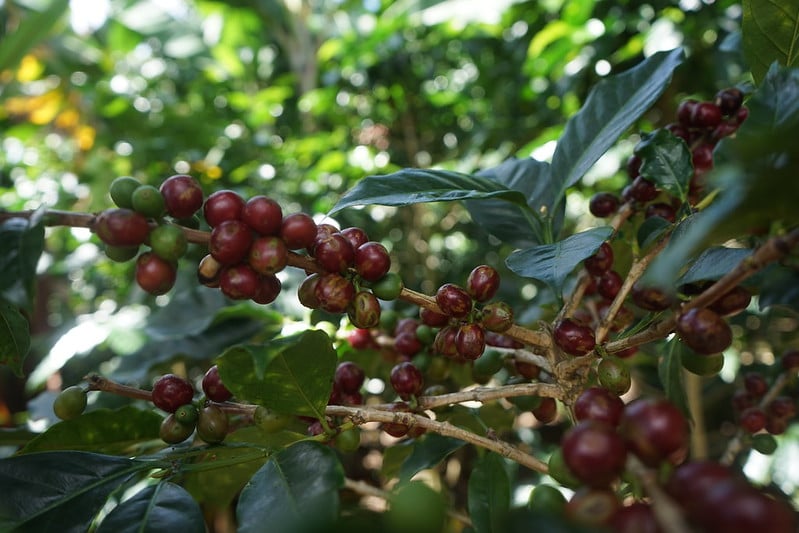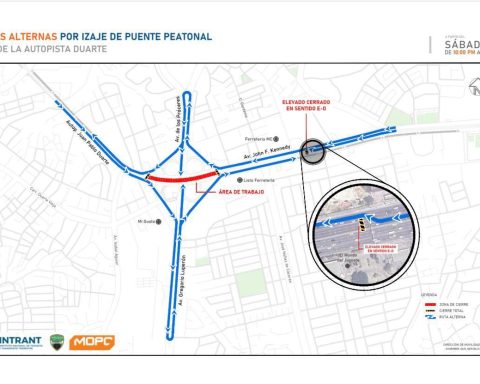Producers of sorghum, sugar and coffee in Nicaragua expect to obtain high income from exports this year. The first two, due to expected increases in production -and prices-. The third, thanks to the good prices, if they are maintained, because the harvest in some parts of the north of the country was lower than expected.
Given its small contributions to the world production of anything, Nicaragua, like any Central American country, is what is called a ‘price taker’, that is, since it is unable to impose the conditions, it must resign itself to selling their products at the price the market is willing to pay.
Coffee and sugar are among the country’s top five export products. In the specific case of coffee, a total reduction of 10% to 15% in grain production is expected, because the copious rains that accompanied Hurricanes Eta and Iotafavored the conditions for damage caused by rust, in addition to the fact that hail rain was reported in some areas in April.
This led to a decrease of almost 50% in the harvest in Nueva Segovia, which represents 400,000 to 500,000 quintals, in addition to sporadic losses in Matagalpa and Jinotega. Despite these negative data, the total harvest is still expected to exceed three million quintals.
The good news is that coffee prices are still above 200 dollars per quintal, so it is expected that the item -which had never reached 500 million dollars exported in a calendar year- will obtain revenues that range between 600 million to 700 million dollars in 2022.
A similar behavior is expected in sugar, if the expectation of obtaining 900,000 more quintals is fulfilled, and the annual average goes from 14 to 19 dollars per quintal. Data from the Center for Export Procedures (Cetrex), show an increase of 18.4% in the sale price, which between January and April went from 38 to 45 cents per kilo exported.
Francisco Vargas, executive director of the National Association of Sorghum Producers (Anprosor), said that they plan to plant some 20,000 apples, which implies a growth of 20% compared to last year (the harvest ends in January), thanks, basically , to the international rebound in prices: lower exports due to the war in Ukraine, and purchases from China, pushed up the price, even in the local market, where a quintal is sold between 16 and 18 dollars, against 12 to 14 dollars it used to cost.
The high cost of producing
If the three items mentioned above have in common the expectation of unusually high prices for their export products, there is another element that all three share: high production costs. Especially, the part that corresponds to agrochemicals that are required to care for -and increase- crops.
An economist who agreed to speak with CONFIDENTIALon condition of anonymity, warned that “Nicaragua’s internal market is exposed to stagflation,” due to the global logistics crisisexacerbated by the war in Ukraine, which “increases the prices of commoditiesmany of which are used to produce, such as fertilizers, which are very necessary in the agricultural and livestock sector”.
The result is reflected in the structure of production costs, because “as costs rise, prices rise, and purchasing power decreases, because wages remain (or do not rise) at the same rate. As consumption decreases, purchases decrease, which leads to lower production. It is a matter of expectations”, he illustrated.
Although there is always the option of producing for export, the source recalls that “not all Nicaraguan products are for export, and opening markets is not something that is done overnight. Sometimes it takes many years.” Additionally, he noted that “each nica that emigrateseach tourist that does not arrive, each family that is poorer, each new informal worker, is one less consumer”.
Returning to the issue of fertilizers, the sources point out how a quintal of urea went from 800 to 2,500 córdobas, and how the fact that nitrogenous fertilizers have tripled their value directly impacts the cost structure of any food that grows or is farm in the country.
“The Bank does not finance the cost overruns on fertilizers,” explained Vargas, adding that this raises the costs that the producer must cover with his own money, although he estimates that “the best price we got allows us to cover these increases.”
Hard to believe official data
Sixteen of the seventeen activities measured by the Monthly Index of Economic Activity (IMAE), grew between January and March 2022. The only exception was agriculture, whose decrease of 3.4% “was due to less work in sugar cane, basic grains and other agricultural products”, according to the report prepared by the Central Bank of Nicaragua (BCN).
The Bank’s report indicates that “the economy maintained its growth path, registering in the original IMAE series a growth of 4.8% compared to March 2021, [y] of 5.8% in the accumulated January-March” of 2022. The problem is that for years, both producers and economists have doubted the reliability of these data.
“BCN data has never been reliable,” explains an expert on agricultural issues, who asked to keep his name confidential. “They never go to the fields. They are based on what the CPCs of the cultivation areas report to them. In previous years, “they accommodated the data that we gave them,” he recalled.
Another source said – also anonymously – that “before, the BCN carried out surveys on farms to update data. Until 2017 or 2018, the technicians from Magfor still arrived, but not anymore”. Before, the producers knew in which farms the technicians were, and the information was shared. Now “perhaps they do some sampling through the cooperatives to make their projections”, or talk to the coffee mills to calculate the amounts exported.
But Vargas, from Anprosor, believes that the data presented by the Bank “are 90% correct”, at least in areas such as sorghum, corn, beans, cattle, poultry, “because he sees the technicians arriving at the productive units do your statistical work.















